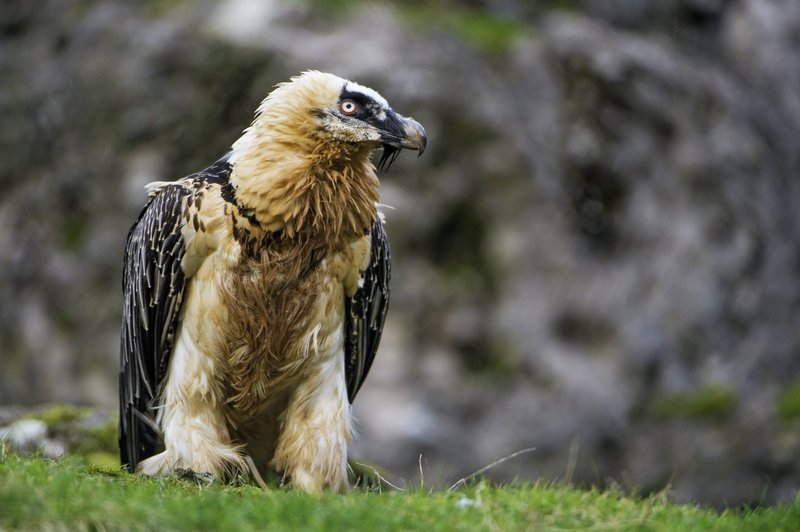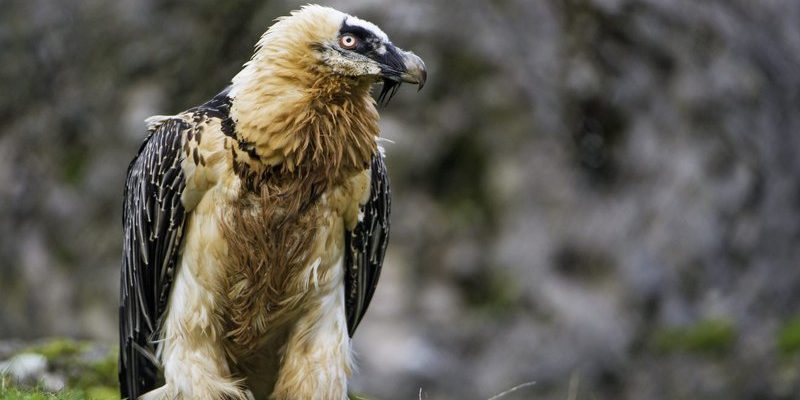
The bearded vulture is not your average bird. While many vultures feast on decaying flesh, this majestic creature has a flair for the dramatic. Its diet primarily consists of bones, which it skillfully breaks down with its powerful beak. You might be wondering how it manages to do this and where it learns such unique foraging techniques. Let me explain the bearded vulture’s hunting and foraging methods in detail!
Understanding the Bearded Vulture’s Diet
The bearded vulture is known primarily for its unusual diet, which is mostly made up of bones. Yes, you read that right—bones! The bird has a special adaptation that allows it to digest bones efficiently. Instead of just scavenging the remains of dead animals, it enjoys a delicacy that many other creatures ignore.
You might be curious about how this works. The bearded vulture has very strong digestive acids that can dissolve bone materials over time. This means that when it eats bones, it’s not just consuming them but rather extracting vital nutrients from them. The high calcium content in bones is especially important for the vulture, supporting its health and strength.
Interestingly, the vulture doesn’t just rely solely on bones. It will also eat some meat, particularly when it can find it attached to the bone. However, it is the bones that really make up the core of its diet. This unique eating habit sets the bearded vulture apart from other scavengers and plays a crucial role in its ecological niche.
How the Bearded Vulture Hunts
Now that we know what the bearded vulture eats, let’s take a look at how it goes about hunting. When you think of a bird of prey, you might picture sharp talons and swift movements. However, for the bearded vulture, hunting isn’t about speed. Instead, it’s about strategy and finesse.
The bearded vulture often soars high in the mountains, scanning the ground below for potential prey. Once it spots an animal carcass, it takes a more creative approach. It doesn’t just land and eat like other birds. Instead, it picks up bones and flies them high into the air. You might be wondering why it does this. Well, the bird drops the bones from great heights to break them into smaller, more manageable pieces.
This clever technique allows it to access the nutritious marrow inside the bones, which is often the most desirable part. If you think about it, this method is like a chef tenderizing meat to bring out the flavors. The bearded vulture’s intelligence in using its environment to get its food is truly impressive!
Foraging Habits: Where and How
Foraging for bones can be quite a task, and the bearded vulture has some remarkable habits that help it succeed. Its typical habitat includes mountainous regions and rugged cliffs, which provide plenty of opportunities for spotting carcasses.
One of the most fascinating aspects of the bearded vulture’s foraging is how it interacts with other scavengers. It often follows larger predators, like wolves or lions, to find carcasses they’ve left behind. Here’s the thing: by playing this waiting game, the vulture maximizes its chances of finding a meal without expending too much energy.
When it comes to finding food, the bearded vulture is also known to be quite resourceful. Rather than just waiting around, it will actively search vast areas for fresh carrion. Its keen eyesight can spot potential meals from miles away. This makes the vulture not just a scavenger but a skilled forager that adapts to its environment.
The Role of Bones in the Bearded Vulture’s Diet
The bearded vulture’s unique preference for bones isn’t just a quirky eating habit; it plays a vital role in its survival. As I mentioned earlier, bones are rich in calcium and other minerals essential for the bird’s health. When the vulture ingests bones, it absorbs these nutrients, which help strengthen its bones and keep it healthy.
The process isn’t just beneficial for the vulture; it also impacts the ecosystem. By breaking down bones and removing carcasses, the bearded vulture helps clean the environment. Think of it as nature’s recycling system—it ensures that nothing goes to waste. This scavenging behavior also supports other wildlife by leaving behind parts of the carcass that smaller creatures can feed on.
Another benefit of this diet is that it enables the bearded vulture to thrive in harsh environments where food can be scarce. By relying on bones, this bird can ensure its survival even when other food sources are limited.
Conservation Status and Challenges
Unfortunately, the bearded vulture faces various challenges in the wild, and understanding these can help us appreciate its role even more. Although it has adapted well to its unique diet, habitat destruction and human interference have threatened its populations.
In some regions, bearded vultures are losing their nesting sites due to deforestation and development. Additionally, poisoning and hunting also pose significant risks. These factors can lead to declining numbers, making conservation efforts crucial for the survival of this magnificent bird.
Organizations around the world are working to protect the bearded vulture through various conservation programs. These initiatives focus on creating protected areas, raising awareness about the species, and working with local communities to promote coexistence. By supporting these efforts, we all can play a part in ensuring that this incredible bird continues to soar high in the skies.
The bearded vulture is truly a unique creature, with its fascinating diet and clever foraging strategies. From soaring high above the mountains to creatively using bones in its diet, this bird exemplifies the wonders of nature. Understanding what the bearded vulture eats and how it hunts offers valuable insight into the delicate balance of our ecosystems. As we work to protect these remarkable birds, we not only support their survival but also the health of our natural world. Let’s keep the conversation going and appreciate all that the bearded vulture brings to the table—figuratively speaking, of course!

